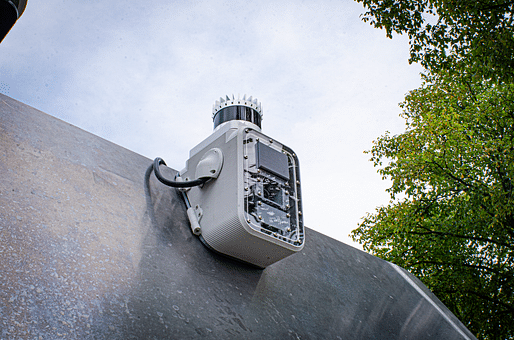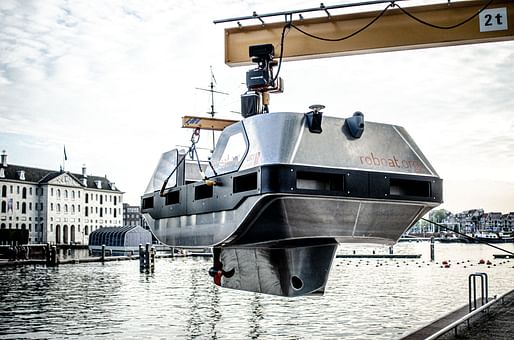
After six years of design and research at MIT, a pair of autonomous boats have been launched into the canals of Amsterdam. Roboat, a research project undertaken by the MIT Senseable City Lab and the Amsterdam Institute for Advanced Metropolitan Solutions (AMS Institute), seeks to encourage a future where autonomous boats could help the city of Amsterdam move part of its road traffic to the water.

From November onwards, the two full-scale prototypes will be used for three use cases: passenger transport, logistics (waste collection), and data collection (surveying water infrastructure and monitoring water quality). The boats will operate with complete autonomy through the use of way-point finding, autonomous docking and undocking, and collision avoidance.

“Picture being amid the hustle and bustle on the Amsterdam canals,” explains Ynse Deinema, Roboat Project Lead at AMS Institute. “This urban context involves tight space maneuvering, including high complexity and not a lot of structure, caused by a great variety of obstacles that can be encountered. To navigate the bustling waters of Amsterdam, Roboat needs a meticulous fusion of proper navigation, perception, and control software.”

To navigate through the waters, Roboat uses LIDAR and cameras to enable a 360-degree view, allowing it to understand its surroundings. The boats also possess algorithms that can categorize specific objects detected in their pathway. In the event that the algorithm cannot categorize an object, a team of human researchers can manually input the object type, for example “canoe” or “railing.” Over time, self-learning software will allow the boat to surpass humans in object recognition, the team claims.

A latching mechanism on the boats allows the prototypes to connect to a docking station, or to another Roboat. “With this feature, Roboat can form temporary bridges to create new urban infrastructure, as well as floating stages and bridges,” explains Carlo Ratti, Director at the MIT Senseable City Lab.

In 2022, the team will focus on augmenting Roboat’s capabilities in the three use cases, such as using the boats to collect waste from Amsterdam city center, hence reducing the number of road-based waste collection vehicles needed.

As well as being a testing ground for Roboat, Amsterdam recently saw the installation of the world’s first 3D-printed steel footbridge, measuring 40 feet in length and containing 4.5 tons of stainless steel. In the past year, the Dutch city has also seen the unveiling of Daniel Libeskind’s National Holocaust Memorial of Names as well as plans for an OMA-designed office building with a woven brick façade.
No Comments
Block this user
Are you sure you want to block this user and hide all related comments throughout the site?
Archinect
This is your first comment on Archinect. Your comment will be visible once approved.